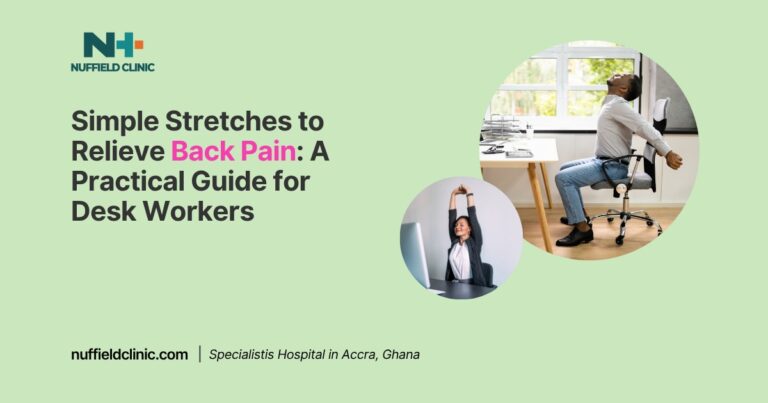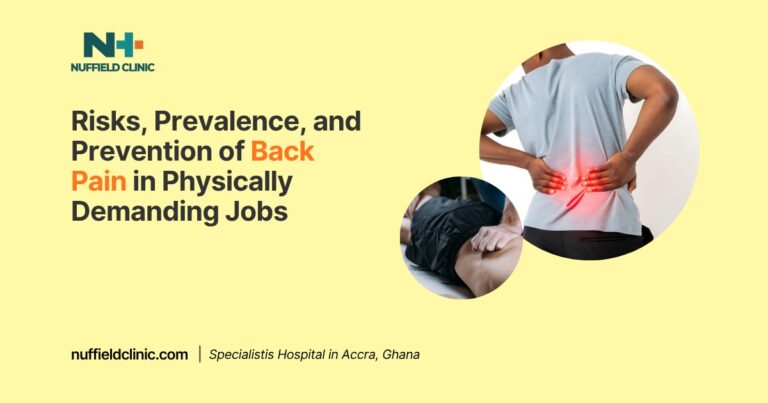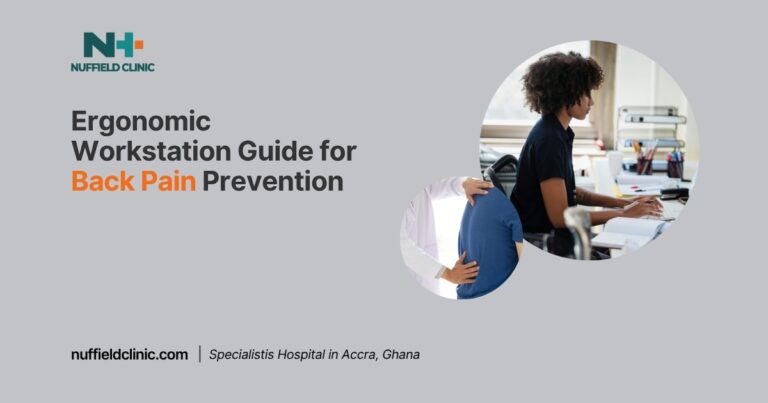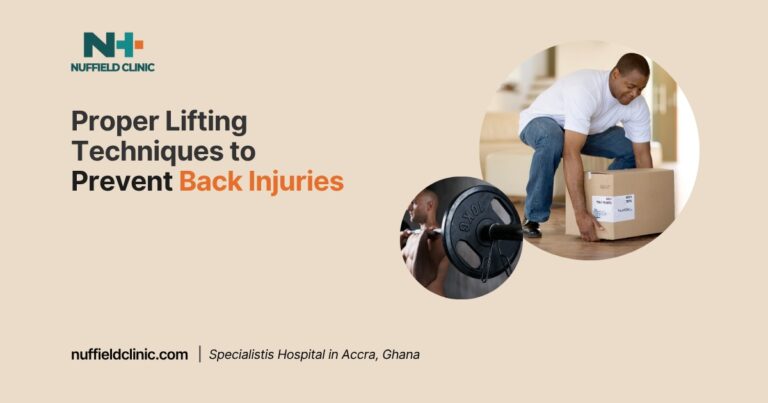Differentiating Minor Back Aches from Serious Work-Related Injury, When to See a Doctor

Back pain is one of the most common complaints in workplaces, especially among those who spend long hours sitting or performing physically demanding tasks. While many back aches are temporary and improve with rest or simple care, others signal serious injuries that require immediate medical attention.
After more than 20 years of working with Nuffield patients, I have seen the importance of distinguishing between minor discomfort and conditions that can cause long-term damage. Recognising when to see a doctor is essential for protecting spinal health and preventing complications.
Common Causes of Back Pain in the Workplace
Back injuries may occur suddenly or develop gradually over time. Acute injuries often result from falls, direct trauma, or lifting with poor technique, which can strain muscles or damage soft tissues. Repetitive strain is another common factor, particularly in office workers and tradespeople who perform repetitive tasks or maintain poor posture for long periods. Athletes and fitness enthusiasts also experience problems when training without adequate recovery.
Degenerative conditions such as disc wear and arthritis may worsen with age, leading to stiffness and reduced mobility. In many workplaces, poorly designed workstations, prolonged sitting, or tasks involving heavy lifting contribute significantly to back injuries.
I can say for a fact that understanding these causes provides context when determining whether a backache is minor or a sign of something more serious.
Signs of a Serious Work-Related Back Injury
While many back aches improve with conservative care, certain warning signs, often called red flags, indicate the need for urgent medical evaluation.
Persistent or severe pain that does not improve with rest or continues to worsen, especially at night, may point to an underlying structural or inflammatory condition.
Numbness, tingling, or weakness in the legs suggests nerve compression, often linked to conditions such as sciatica or herniated discs. A back ligament injury can also cause instability and contribute to nerve symptoms.
Loss of bladder or bowel control is a medical emergency, as it may indicate cauda equina syndrome, a rare but serious condition caused by severe nerve compression.
Back pain following trauma, such as a fall or direct blow, requires assessment even if symptoms seem mild, since fractures or misalignments may not be immediately obvious.
Other concerning signs include unexplained weight loss, fever, or chills alongside back pain, which may signal infection or tumours. Persistent stiffness that restricts movement, or radiating pain extending into the legs or arms, also indicates nerve involvement or disc-related injury.
Treatment and Recovery Options
When red flags are present, seeking medical care without delay is crucial. Physiotherapy plays a central role in recovery, with treatment plans tailored to the individual. Manual therapy helps improve mobility, while targeted exercises strengthen weak muscles and support posture. Education on movement and ergonomics reduces the risk of recurrence.
Common rehabilitation exercises include pelvic tilts for core activation, glute bridges to strengthen the lower back and hips, and stretching routines to improve flexibility. Postural exercises for the upper back are equally valuable for long-term resilience.
Other conservative measures include modifying activities to allow healing, using ice or heat therapy to control pain and inflammation, and gradually introducing strengthening and mobility exercises.
In some cases, medications such as pain relievers or anti-inflammatories may be prescribed. Advanced interventions, including imaging, injections, or surgery, are reserved for severe cases when conservative measures are not sufficient.
How to Prevent Work-Related Back Injuries
Prevention is as important as treatment. Good posture, whether at a desk or while standing, reduces unnecessary strain on the spine. Proper lifting techniques, such as bending at the knees, keeping the back straight, and engaging the core muscles, protect against sudden injury.
Strengthening abdominal and lower back muscles improves spinal stability, while regular activity reduces stiffness and maintains mobility.
Workplaces that promote ergonomic practices, such as adjustable chairs, proper workstation setup, and safe lifting aids, can significantly reduce the frequency of back injuries. Individuals can also protect themselves by taking frequent breaks, stretching throughout the day, and staying physically conditioned.






